#peale
Text
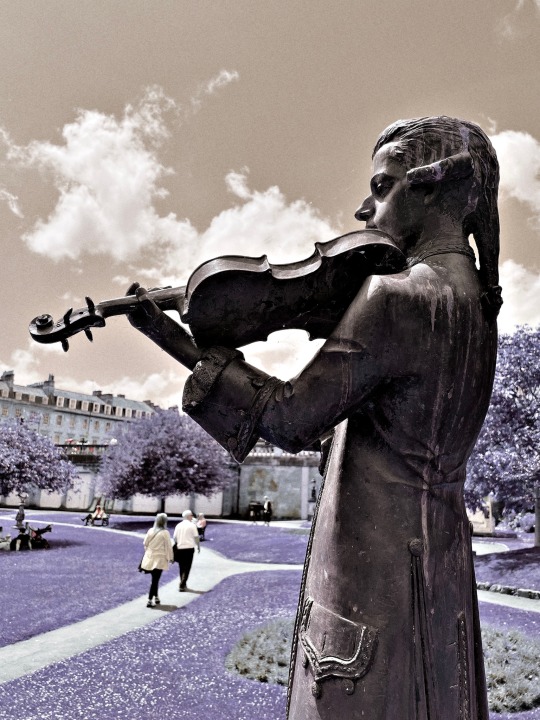
2 notes
·
View notes
Text

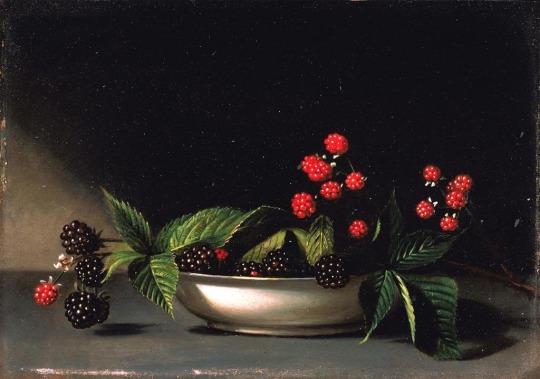
Raphaelle Peale
0 notes
Text
youtube
07 | 05 | 2021 Behind the Scenes with Peale's
"Staircase Group"
Featuring Lucia Bay - Conservator at Philadelphia Museum of Art
——————————–
Video created for Philadelphia Museum of Art, 2021.
Director of Photography and Editor: Elizabeth Leitzell
Art Director: Luis Bravo
Writer: Sid Rodríguez
Producer: Gretchen Dykstra
Production Sound Mixer: Loren Stata
Gaffer: Kyle Struve
Additional photography by Jason Wierzbicki, Lucia Bay, Rosalie Hooper, and the Philadelphia Museum of Art Photo Studio.
0 notes
Text
From one Tilghman to the next: Tench and his descendants [Part 1]

As noted by the Maryland State Archives, this painting by Charles Wilson Peale for the Maryland State Archives, "Peale added two figures to the foreground of his composition. The first, to Washington's immediate left...The second figure Peale added is Lieutenant Colonel Tench Tilghman (1744-1786), a Marylander who served as Washington's military secretary and aide-de-camp, who is shown in profile. Tilghman's portrait was painted from life."
As we wrote about about last week on this blog, the pension for Anna Maria Tilghman, the widow of Tench Tilghman, is stock-filled with information. This post aims to dig into that information even more. Tench's military career is evident without a doubt, and was part of the focus of my poster board in 2007 for the History Day competition titled "Tench Tilghman Pays a Price for Being a Patriot," for which I only got to the state level with their theme of "Triumph & Tragedy in History." That is part of the reason I'm writing these posts to be honest, to rekindle my interest in the subject I explored all those years ago, even though I did go to the Maryland State Archives, Maryland Historical Society (MHS), Historical Society of Talbot County, and the Library of Congress. [1] Back then I wrote about how I took notes from copies of original letters and documents at the MHS, a photograph of Tench Tilghman's uniform, and that Tench came from a privileged family with sympathies toward the British crown, eventually making "sacrifices for Patriotism, facing estrangement from his family and disease contracted in battle," leading to his early death at the age of 41.
Reprinted from my History Hermann WordPress blog.
Tench during the Revolutionary War and after
As far back as May 1769, George Washington was on good terms with the Tilghman family. He wrote James Tilghman, Tench's father (who was once written about by the Maryland State Archives), that year, asking for advice in getting "Entrys of Land for me, near the Settlement of Redstone, in the Provence of Pensylvania" since he was, at the time, "anxious of obtaining some little possession in a Country that I have experienced many toils and hardships in." Then in September 1774, Washington "dined at Mr. [James] Tilghman’s" house in Talbot County, Maryland. By 1776, Tench was translating letters in French for Washington as indicated here and here. By August, he had brought a deserter to George Washington himself! In all, within Founders Online, are 78 letters from Tilghman to other individuals, sometimes Washington. As the National Park Service puts it, "at Valley Forge, almost 30% of the correspondence that came out of Washington’s headquarters was written by Tilghman." That's an amazing feat!
On March 19, 1784, Tench wrote from Baltimore, saying that there are not any bricklayers but only carpenters, to Washington's Mt. Vernon as noted in other letters. So, he is basically a caretaker of Mt. Vernon? In a letter a few months later he added that Irish servants arrived, saying the following:
I shall attend to your direction of substituting a Stone Mason in the room of a Bricklayer, should circumstances require it—I will also make enquiry for a Stucco Worker...he must be perfect, otherwise, like a bad Painter, he will deface what he ought to decorate. I beg leave to take this opportunity of acknowledging the rect of your Excellency’s letter of the 19th of May from Philada accompanied by a Badge of the Order of the Cincinnati, of which Society I have the honor of being a Member...I therefore take pleasure in informing you that Mrs Tilghman presented me with a Daughter [Margaret] a fortnight ago [May 25], and that she and her little Charge are both perfectly well
The next letter, the following month, is in the same vein, adding that in Baltimore there is a "demand for Carpenters and Masons, that the Master Builders in those Branches who are settled here, in order to intice the new comers to give them a preference," notes about Irish coming to Baltimore to work, whom would take not take "less than the high daily Wages given to such Tradesmen here." Again, these are about those who are coming to work at Mr. Vernon, with Tench meeting with the workers themselves. He adds in another letter about Mt. Vernon's specifications: "The Door of the House to be as large as you can conveniently make it—otherwise when the Trees come to any size, the limbs are broken and the Fruit torn off in moving in and out."
By March 1785, Tench is clearly not the caretaker of Mt. Vernon anymore. Instead he writes about the daughter of "the late Capt. William Anderson of London" who is in a bad way, worries about the "the health of Mrs Washington and yourself" and adds that "Mrs Tilghman is upon a visit to her Friends upon the Eastern shore" whom he will soon join. By May, he gives even more of a story, adding that he is currently tied down by business in Baltimore:
How much you flatter me, my dear General (for by that name I must ever be allowd to call you) by your kind invitation to visit you [in Mt. Vernon]. My circumstances require a close attention to Business, and I am, on that account, cheifly confined to the limits of this Town. I often wish for a good pretence to go as far as Alexandria or George Town. Once there I should not fail to pay my Respects at Mount Vernon. If I ever find time to make a jaunt of pleasure—Mrs Tilghman will assuredly be of the party. She joins in sincerest Compliments to Mrs Washington and yourself
By August, he is talking about those on a ship called the Pallas, owned by a Mr. John O’Donnell, an Irish-born man, with the crew on the ship mostly "from the Coasts of Malabar and Coromandel, and are much of the Countenance and Complexion of your old Groom Wormely." As always, he (and his wife) wishes George and his wife Martha well. Later he recommends a man named John Rawlins to work at Mt. Vernon, describing him as a "masterly Workman" while also saying that he only has one regret, that he cannot make a visit, saying that "my Business ties me down to the Circle of Baltimore."
By October, he describes his sickness as getting to him, even as he claims he is getting better:
You will wonder at my long silence; but you will excuse me when I inform you, that your letter of the 14th of Sept. found me confined to my Bed by a most Severe nervous Fever, which kept me there near four Weeks. I am now far from being recovered, but as I can mount my Horse, I take daily Exercise, and find my Health and Strength returning by slow degrees.
His next letter is a couple months later in December, in which he writes about meeting a man named "Count Castiglioni...who, in pursuit of Botanical Knowledge, has thought it worth his while to visit this, hitherto, almost unexplored Continent" whom he recommends Washington meet. The same month he writes Washington again talking about gentlemen he has recommended to Washington, and seems to be a sort of caretaker of Mt. Vernon again, writing that "the Work to be began at Mount Vernon by the 1st or middle of April next—at farthest." In other letters he writes about sickness of some of these workers, and about his "Brother James [who] lives at Talbot Court House, the Central spot of the Eastern Shore Counties, and convenient to the State of Delaware also."
In 1786, there are four letters written by Tench to Washington. The first is on January 16, for which he talks about setting Rawlins to work on fixing up Mt. Vernon, again writing about this in March. On March 16 he again writes about his sickness:
I have been confined upwards of a Fortnight in great measure, to my bed, by the return of a Complaint in my side with which I was troubled some time ago. I recover but very slowly, but I hope that as soon as I am able to enjoy the favorable Season which is approaching I shall soon get recruited.
On March 23 he writes his last letter to Washington, in which he says that
I am still unable to leave my Chamber, tho I think I am rather better than when I wrote to you last.
On April 22, Thomas Ringgold Tilghman, Tench's brother, tells Washington about Tench's death only a few days before:
I have the most melancholy Task to perform, that was ever yet imposed upon me; that of making you acquainted with the Death of my poor Brother Tench. Painful however as it is, I thought a duty not to be dispensed with towards one for whom he had so high a Reverence & so warm an Attachment as for yourself. Not above three days before his death every symptom bade fair for a speedy Recovery, when an unexpected Change took place, which in a short time destroyed every hope. He retained his senses perfectly till within a few hours of the time that he expired, which was in the Evening of the 18th, when he went off without the least pain & even without a struggle: As it is our Wish to settle his Affairs as speedily as possible, I enclose your account, the Bale of which £54.10.4 you will be pleased to pay into the hands of Messrs Josiah Watson & Co. of Alexanda which mode of settling it, is agreable to his Intentions.
To this, Washington replies the following month with almost a eulogy:
As there were few men for whom I had a warmer friendship, or greater regard than for your Brother—Colonel Tilghman—when living; so, with much truth I can assure you, that, there a⟨re⟩ none whose death I could more sincerely have regretted. and I pray you, & his numerous friends to permit me to mingle my sorrows with theirs on this unexpected & melancholy occasion—and that they would accept my compliments of condolence on it.
That is all that can be said about Tench in Baltimore. There are letters regarding his efforts at delivering surrender papers from Yorktown to Annapolis and then the Continental Congress in 1781. [2] Apparently one his descendants, years later, would be named Oswald. The Maryland State Archives gives a quick overview of Tench's later life:
...[his children were] Anna Margaretta, born May 24, 1784 [who married]...her cousin Tench Tilghman, son of Peregrine Tilghman of "Hope"...[and] Elizabeth Tench, born October 11, 1786 [who married] Col. Nicholas Goldsborough...In 1784 formed a partnership with Robert Morris in Baltimore called Tench Tilghman & Co. Lived on Lombard Street...[died] April 18, 1786 in Baltimore [and was] buried [in] St. Paul's Church.
Within their sources is a chancery court case in which Samuel Stringer Cole sued James Carey, Margaret Tilghman, and Elizabeth Tilghman, a Baltimore Sun article, Papenfuse's "Remarks to Board of Public Works, February 4, 1998," other remarks, and a program. Most interesting is the 18-pages of a scanned inventory, showing that he had the many possessions when noted in May 1786. Instead of reprinting each (as that stretches for 7 pages), I picked the ones I thought were representative:
1 small sword
1 gold watch
10 coats with gold epaulets for a coat
13 shirts
14 socks
17 handkerchiefs
1 saddle cloth
1 pair of pistols
1 riding stick and 1 pair of spurs
2 military books
1 sword belt
22 silver table spoons
24 silver desert spoons
24 silver desert spoons and sugar tongs
12 Mahogany chairs
12 pewter dishes
100 lb good brown sugar
This showed his class position in society without a doubt, especially that he rode on a horse but did not own a plantation with enslaved blacks like his contemporaries (i.e. Thomas Jefferson and George Washington). The letter by Thomas to George Washington is not a surprise because he was the administrator of Tench's estate. Today, the MHS has papers specifically on the Tilghman family, as does the Library of Australia. Some even wrote a poem about him, with Washington placing "Tilghman among the prominent of the Revolution" as one writer put it.
Tench's wife, Anna Maria TilghmanBefore getting to Tench and Anna Maria's children, it is worth talking about Anna Maria. Buried on Talbot County MD, her former home was Plimhimmon, with her parents as Matthew Tilghman, an important figure in Maryland politics during the Revolutionary War, and Anna Lloyd, from the Lloyd family which was deeply rooted in Talbot County and also involved in local politics in the state (then a colony) of Maryland. Matthew's brother was James, who was the father of Tench, who had three other siblings (Richard, Anna Maria, and William). Anna Maria was, as the story goes, born at the "Hermitage," the family's plantation not to be confused with Andrew Jackson's home of the same name.Later, the "Hope House," established in 1800 would be the "Home of Tench Tilghman and his wife, Margaret Tilghman" with this Margaret Tilghman the "niece of Margaret Tilghman Carroll of Mount Clare – the daughter of Margaret’s sister Anna Maria and her husband, Colonel Tench Tilghman." Apparently in the Talbot County Historical Society hangs a copy of a "167-year-old portrait of Anna Maria...where she looks down through her old-fashioned glasses at the goings-on of the 21st century world," with the original in " the Shreve home."
Tench and Anna Maria's first daughter, Ann Margaretta
Ann Margaretta, or called Margaret for short, was born in 1755 as I noted in the previous post.As the letters above note, Margaret was born sometime in March 1784. Before her untimely death on March 18, 1812, she married a man named Tench Tilghman, the son of Peregrine Tilghman (whose father was Richard Tilghman who was the brother of Tench's father, James) and Deborah Lloyd. With this Tench she had three children. One of them, with the same name as his father, Tench, was mentioned in the pension documents in the previous article, while the other two children, an infant and William Ward, were not since they did not live very long (the infant died at less than a year old and William at age 4). Family history sites don't say much about her, except that her son Tench would be the future founder of the Maryland & Delaware railroad.
Nothing else can be currently determined.
Tench and Anna Maria's second daughter, Elizabeth
From our previous post it was clear that Elizabeth was born after Tench's death. Her gravestone only says she was 65 years old when she died on May 5, 1852, meaning she she can be the child of Tench and Anna Maria even though simple subtraction pegs her birth date in 1787 (when it was likely late 1786 but her birth date had not come up when she died). We also know that she married a man named C.T. Goldsborough and seemingly had a child named M. Tilghman Goldsborough and that she lived until at least 1843. Her gravestone shows that her husband was not "C.T. Goldsborough" but a man named Nicholas Goldsborough, and that she had six children with him:
Matthew Tilghman Goldsborough (1812–1861) [undoubtedly the same as "M. Tilghman Goldsborough"]
James Nicholas Goldsborough (1814–1871)
A Margaretta Goldsborough Hollyday (1816–1878)
Sally Goldsborough (1827–1870)
Nicholas Goldsborough (1829–1891)
Mary Henrietta Goldsborough (1834–1907)
Due to the fact that she died in 1852, this is great for discovering more of her history, since she has to be in the 1850 census, the first that names all of those in the household, not just the head of the household.
Looking up Nicholas's name we find a record of his birth, but also the 1850 census for "Talbot county, part of, Talbot, Maryland, United States." Rather than just linking the census it is worth reprint the image of the census itself, showing a household of 12 individuals!
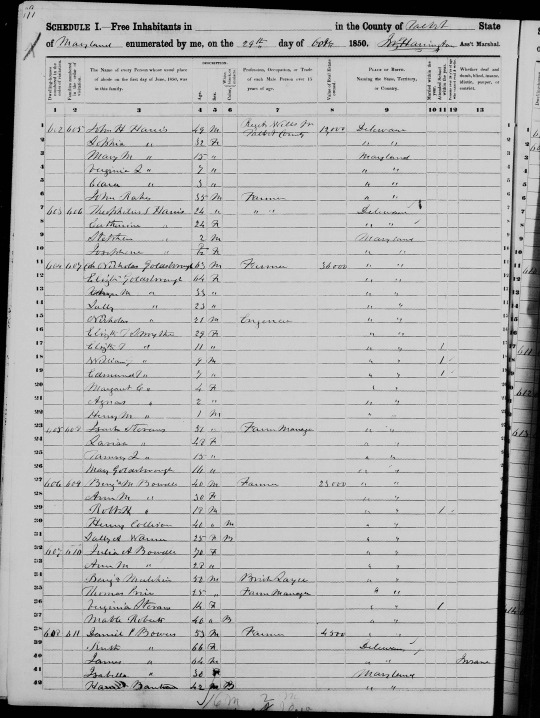
Nicholas is called a Colonel, from what I can see, and is a farmer, with the Symthe family also living with them.
Before this, the 1820 census shows a Nicholas Goldsborough in "Trappe, Talbot, Maryland, United States," the 1830 census show a man of the same name in "Talbot, Maryland, United States" while the 1840 census shows a man by the same name in "District 3, Talbot, Maryland, United States." One can say these men are the same and that they are undoubtedly Elizabeth's husband of the same name. Additionally, it is likely that Elizabeth was living with him. Other records, within the 1850 "slave schedules" show that her husband is clearly a slaveowner, of at least three individuals. Hence, the Tilghman family could not escape slavery and was part of it without a doubt.
It is hard to say when Elizabeth married Nicholas. I say that because the 1800, 1810, 1820, and 1840, censuses show a woman named "Elizabeth Tilghman" in Talbot County, alone. Likely the "Mariah E Tilghman" in the 1840 census is Tench (the 1st)'s wife.
The story of Henrietta Maria Francis
As I noted in my post last week, a woman named Henrietta Maria Francis was first "acquainted" with Tench (in 1780), when she was age 25, and married the uncle of Tench, in 1783, with Tench visiting them after their marriage. She said in her deposition in the pension that:
...she intermarried with Philip Francis, the uncle of the said Tench Tilghman in the year seventeen hundred and eighty and was in the year seventeen hundred and eighty three was living near Eden Park, near the town of Wilmington, in Delaware, and that the said Col Tench Tilghman, before his marriage, and in the month of March of March seventeen hundred and eighty three made a visit to the despondents husband, at [Eden Park]
One history of Tench seems to mention this Philip fellow, saying that he is the brother of Anna Francis, the wife of James Tilghman, Tench's father, while another individual, "Tench Francis" is mentioned as Tench's uncle. Find A Grave is no help in this regard, only finding three individuals with the name of "Tench Francis." Other searches note a man named "Sir Philip Francis" but it not known of this is the same as Henrietta Maria's husband. The Wikipedia page for Tench Francis Sr gives the biggest clue:
Tench Francis (born probably in Ireland; died 16 August 1758) was a prominent lawyer and jurist in colonial Maryland and Philadelphia, Pennsylvania...In 1724 he married Elizabeth Turbutt. Together, they had [a number of children including] Philip Francis, who married Henrietta Maria Goldsborough, who were the grandparents of Philip Francis Thomas...[and] Ann Francis, who married James Tilghman, who were the parents of Tench Tilghman...Tench Francis died in Philadelphia in 1758.
So, Henrietta Maria's maiden name was Goldsborough and her husband, Philip Francis, had the same father as Tench's mother, Ann Francis. Searching for "Henrietta Maria Goldsborough" turns up varied results on Find A Grave so it is not known which, if any, are the same as Philip's wife. The same can be said for the results on Family Search. Tech does seem to call him "Phil Francis" in 1776 so perhaps Henrietta did know Tench well.
Conclusion
The Tilghman family is a gift that keeps giving for research, one that can continue to be mined for research. For now there won't be a follow-up article, but if anything else comes up in the future, an article adding to previous documents may be released. As always, I look forward to your comments.
© 2017-2023 Burkely Hermann. All rights reserved.
Continued in part 2
#tilghmans#ancestors#ancestry#genealogy#family history#white history#tench tilghman#peale#george washington#census#talbot county#farmers
0 notes
Video
94692FCA-1C49-4E21-AAC6-154D5CB3280F by Henry
1 note
·
View note
Text

Rubens Peale with a Geranium painted by Rembrandt Peale (1778 - 1860)
#art#art history#artwork#culture#curators#history#museums#painting#vintage#romanticism#rembrandt peale
895 notes
·
View notes
Text

[ID in Alt Text]
studies of rembrandt peale that turned into this guy
#critical role#percival fredrickstein von musel klossowski de rolo iii#percival de rolo#vox machina#cr1#critical role fanart#teansoupnart#story time: at first i'd just done the one on the right but i wanted to draw an older percy#so i went to look up more pictures and found one i liked. turns out it was of the same guy. rubens peale. both painted by his brother#small world (pinterest)
417 notes
·
View notes
Text


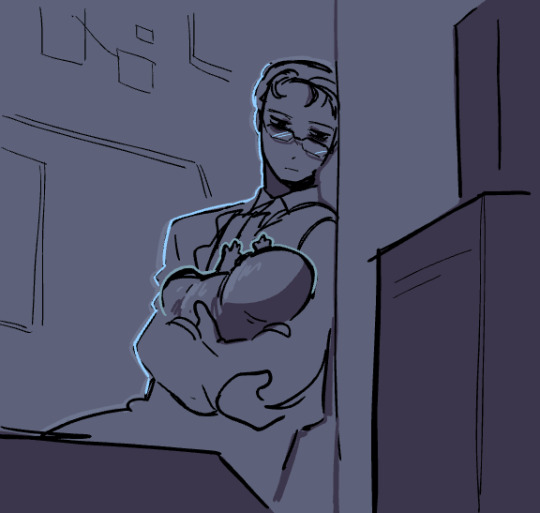
Han Myungoh my wife
#damn it#why wasn't there more of him in the novel#I will cry tears#sitting on my puddle of tears#sopping wet and sad#i need to know what the heck happened to this guy#my skin feels so irritated because of how much i want to know more of this guy#i want to peal of my skin for him#omniscient reader's viewpoint#orv#han myungoh#orv han myungoh#han dareum#orv han dareum#my drawing museum
434 notes
·
View notes
Text
Super silly secret life pearl design <3

+ some messy doodles below [ mounders ]
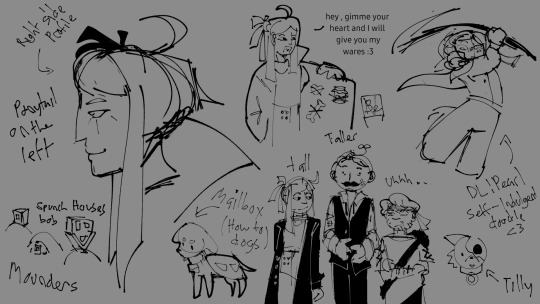
Rbs are super appreciated !
#achilles art moment#trafficblr#traffic smp#traffic series#pearlescentmoon#pearlesentmoon fanart#secret life pearl#secret life#peal <33#digital fanart#digital art#my art
479 notes
·
View notes
Note
For the fanon swap
Cat Pearl 🐱
Found you through your secret life art they are all so very lovely <3

she's just a lil mischievous, a lil silly. many people to watch
(also thank you sm!! <3)
#hermit swap#pearlescentmoon#pearlescentmoon fanart#always watching#limited life wet cat peal my beloved#slightly less unhinged then double life wet cat#still havent drawn mad dog cleo tbh#artist on tumblr#sol art#mcyt
362 notes
·
View notes
Text

Titian Peale - White Squirrel (1819)
344 notes
·
View notes
Text

Sarah Miriam Peale (1800-1885)
"Still Life with Watermelon" (1822)
Oil on panel
Located in the Fogg Museum, Cambridge, Massachusetts, United States
#paintings#art#artwork#still life painting#fruit#sarah miriam peale#oil on panel#oil on wood panel#fine art#fogg museum#harvard art museums#museum#art gallery#american artist#woman artist#women artists#female artists#fruits#watermelon#melon#grapes#1822#early 1800s#early 18th century
221 notes
·
View notes
Text

Goth Pearl 🖤 by CubedCoconut
#CubedCoconut#su pearl#steven universe#steven universe fanart#pearl fanart#black and white#goth peal#goth girl#goth characters#fanart#su fanart#2d art#💀#pearl#cartoon network
273 notes
·
View notes
Text
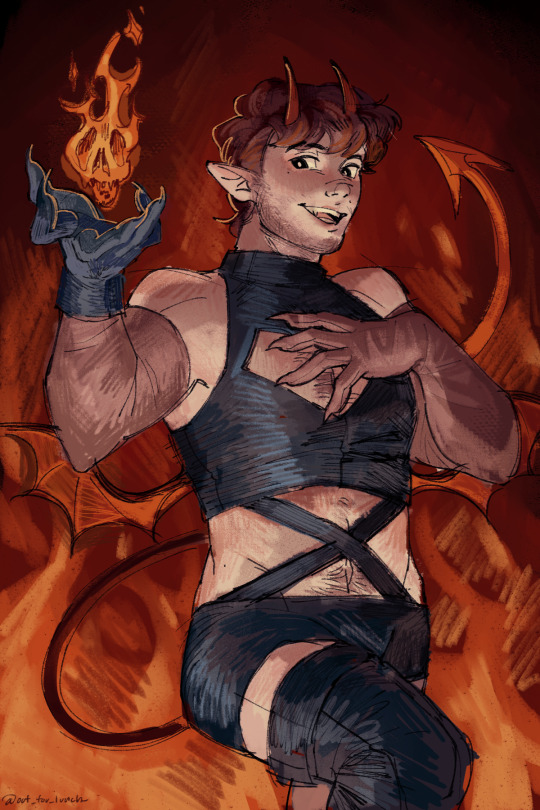
George, keeper of hellflame
#dsmp art#georgenotfound#my fucking girlfdriend#dream and sapnap art coming soon this will be a mini series#keep ur eyes pealed
271 notes
·
View notes
Video
94692FCA-1C49-4E21-AAC6-154D5CB3280F by Henry
1 note
·
View note

